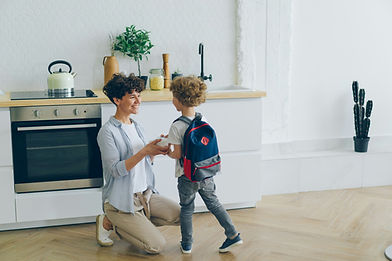What is Sensory Processing?
How the Brain Takes in the World—And Why It Matters
Sensory processing is how our brains receive, organize, and respond to information from the world around us. This includes the traditional five senses (sight, sound, smell, taste, and touch) — plus two lesser-known but equally important systems:
-
Vestibular: sense of movement and balance
-
Proprioception: sense of body position and muscle/pressure feedback
Every child processes sensory input in their own unique way. For some, this process is automatic. For others, their nervous system responds differently — either more intensely or less consistently — which can affect how they feel, learn, and interact.
These differences are not misbehavior — they are a child’s way of communicating that their brain is working hard to manage the input it’s receiving, sometimes with more effort than others can see.
JUMP TO SECTION

Is This Something Everyone Experiences?
We all have sensory preferences. You might love soft blankets but avoid scratchy tags, or feel irritated by noise when you’re overtired. But for some children, these responses are more intense, more frequent, and more disruptive to daily life.
Think of it this way: Everyone has a “sensory volume dial.” For some kids, the dial is turned way up — everything feels louder, brighter, more intense. Others may need more input to feel focused or calm. These sensory differences aren’t just quirks — they’re patterns that can shape how a child moves through the world.

How the Brain Processes Sensory Input
The brain goes through three main steps when processing sensory information:
-
Detection: Something is noticed — a sound, texture, or movement
-
Interpretation: The brain makes meaning of it — is it safe? annoying? fun?
-
Response: The body reacts — by avoiding it, seeking more, or shutting down
For kids with sensory processing differences, any part of this system may work differently. Their brains might:
-
Send “danger” signals in safe situations
-
Miss input others easily notice
-
Seek out extra input to stay alert or regulated
Everyday Examples of Sensory Differences
Sound
-
Covers ears for everyday sounds (vacuum, toilet flush, hand dryers)
-
Becomes overwhelmed in noisy group settings
-
Doesn’t always respond to name, especially when background noise is high
Sight
-
Fascinated by spinning objects or visual patterns
-
Avoids bright lights or cluttered visuals
-
May struggle with eye contact when overstimulated
Touch
-
Strong reactions to certain fabrics, grooming tasks, or sticky textures
-
Seeks firm pressure or tight hugs
-
May seem less responsive to pain or temperature changes
Movement (Vestibular)
-
Loves spinning, jumping, and swinging
-
Avoids or is unsure on playground equipment
-
Feels unsteady or anxious with movement changes
Body Awareness (Proprioception)
-
Bumps into people or objects
-
Uses extra force when writing or playing
-
Seeks deep pressure through crashing, pushing, or lifting

The Sensory Backpack
Imagine your child is carrying an invisible sensory backpack. Every sound, texture, or unexpected change adds a little weight.
When the backpack is light, your child can adapt easily. But when it’s full — after a long day, a noisy setting, or an itchy shirt — even one small thing (like a blender turning on) can feel like too much.
This isn’t inconsistency — it’s about capacity.
Real-Life Impacts
Sensory processing differences can influence:
Emotional regulation
Transitions between tasks or places
Eating, sleeping, and toileting
Focus and participation
Social interaction and comfort
How safe or in-control a child feels in their body
Some children may appear calm at school but become dysregulated at home. Others may struggle more in unfamiliar or overstimulating settings. These are not signs of manipulation or willfulness — they’re signs of effort and overload.
What Can Help?
Occupational Therapy (OT)
An OT with sensory integration expertise can:
-
Identify your child’s unique sensory profile
-
Use affirming, play-based strategies to support regulation
-
Introduce tools and routines that help your child stay calm, engaged, and connected
-
Empower your child to advocate for their needs in ways that feel natural and positive
OT is not about changing who your child is — it’s about helping them feel safe in their body and environment.
Home-Based Supports
-
Movement breaks (trampoline, scooters, swings)
-
Deep pressure (weighted blankets, tight hugs, compression wear)
-
Visual tools (schedules, timers, soft lighting)
-
Soothing input (fidget tools, chewelry, calming spaces)
-
Predictable routines with gentle preparation for changes
These aren’t bribes or rewards. They’re tools that support regulation and well-being.
School Accommodations
Your child may benefit from supports through an IEP or 504 Plan, such as:
-
Sensory breaks or a designated calming space
-
Noise-canceling headphones
-
Flexible seating or movement options
-
Visual supports for transitions or task steps
-
Reduced sensory demands during testing
Helping teachers understand your child’s sensory needs can transform school from an experience of survival to one of thriving.

Source: Neurowild
Final Thoughts
Sensory differences are real. They’re valid. And they’re worthy of support.
When we respond to what a child needs instead of reacting to how they express it, we build trust, safety, and connection.
